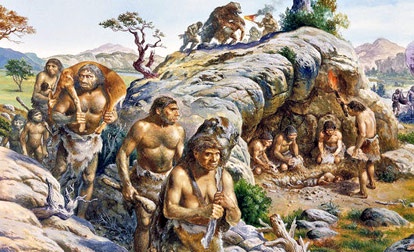- Overview
-

Focusing on three key taxa (Equus, Bison/Bos, Rangifer), this diachronic study will incorporate a number of archaeological herbivore assemblages that span multiple periods, and aims to:
- assess changes in niche feeding behaviour and landscape use through time
- examine the potential relationship herbivore ecology/biogeography, and climate change, over a time-scale which cannot be achieved in modern contexts
- explore the susceptibility or resistance mid-large herding herbivores have to the type of broad-scale climatic shifts that occurred in Europe during the late Pleistocene
- investigate the implications of temporal change in herbivore palaeoecology/biogeography for contemporary faunal communities, the palaeoenvironment and Palaeolithic human hunter-gather groups
- Related Publications
-
- Britton, KH., Gaudzinski-Windheuser, S., Roebroeks, W., Kindler, L. & Richards, MP. (2012). 'Stable isotope analysis of well-preserved 120,000-year-old herbivore bone collagen from the Middle Palaeolithic site of Neumark-Nord 2, Germany reveals niche separation between bovids and equids'. Palaeogeography Palaeoclimatology Palaeoecology, vol 333-334, no. -, pp. 168-177., http://dx.doi.org/10.1016/j.palaeo.2012.03.028 [Online] DOI: 10.1016/j.palaeo.2012.03.028
- Britton, KH., Grimes, V., Niven, L., Steele, T., McPherron, S., Soressi, M., Kelly, T., Jaubert, J., Hublin, J-J & Richards, M. (2011). 'Strontium isotope evidence for migration in late Pleistocene Rangifer: Implications for Neanderthal hunting strategies at the Middle Palaeolithic site of Jonzac, France'. Journal of Human Evolution, vol 61, no. 2, pp. 176-185., http://dx.doi.org/10.1016/j.jhevol.2011.03.004 [Online] DOI: 10.1016/j.jhevol.2011.03.004
- Britton, K., Grimes, V., Dau, J. & Richards, MP. (2009). 'Reconstructing faunal migrations using intra-tooth sampling and strontium and oxygen isotope analyses: a case study of modern caribou (Rangifer tarandus granti)'. Journal of Archaeological Science, vol 36, no. 5, pp. 1163-1172., http://dx.doi.org/10.1016/j.jas.2009.01.003 [Online] DOI: 10.1016/j.jas.2009.01.003
- Britton, KH., Gaudzinski-Windheuser, S., Roebroeks, W., Kindler, L. & Richards, MP. (2012). 'Stable isotope analysis of well-preserved 120,000-year-old herbivore bone collagen from the Middle Palaeolithic site of Neumark-Nord 2, Germany reveals niche separation between bovids and equids'. Palaeogeography Palaeoclimatology Palaeoecology, vol 333-334, no. -, pp. 168-177., http://dx.doi.org/10.1016/j.palaeo.2012.03.028 [Online] DOI: 10.1016/j.palaeo.2012.03.028
